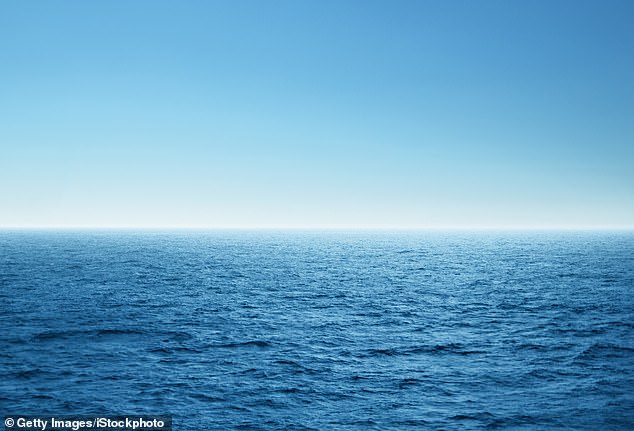Scientists unveil controversial plan to fill Pacific Ocean with iron by 2026 in bid to slow global warming
Scientists have proposed a controversial method to combat climate change: filling much of the Pacific Ocean with iron.
This technique, called ocean iron fertilization (OIF), involves dumping iron powder on the ocean surface to stimulate the growth of a tiny marine plant called phytoplankton, which consumes carbon dioxide and traps the gas in the ocean.
Computer models showed that releasing up to two million tons of iron into the sea each year would remove nearly 50 billion tons of carbon dioxide by the year 2100.
Researchers plan to release the iron across a 9,700 square kilometer area of the northeastern Pacific Ocean by 2026.
Iron can help phytoplankton bloom, which absorbs carbon dioxide from the ocean and prevents it from entering the Earth’s atmosphere
A team of scientists from the nonprofit Exploring Ocean Iron Solutions (ExOIS) is investigating the distribution of iron sulfate in areas where the nutrient is scarce.
This includes the northeastern Pacific Ocean, which extends from the west coast of North and South America to the east coast of Asia and up to the Arctic.
By spreading iron in these areas, scientists can stimulate the growth of phytoplankton, keeping carbon dioxide out of the atmosphere for years.
It is essential to remove CO2 from the ocean. This can help to limit climate change by reducing the amount of greenhouse gases that are released into the atmosphere.
About 40 billion tons of carbon dioxide are released into the atmosphere each year, of which the ocean absorbs about 30 percent.
The researchers hope that by spreading iron sulfate into the ocean, they can limit global warming to 2.7 degrees Fahrenheit.
However, critics warn that the iron could deplete nutrients for marine life and destroy part of the ocean food chain.
But the plan is going ahead and the schedule will be ready in just two years.
Scientists are now working on a way to convert the iron into a powder that dissolves easily in water and spreads over the targeted areas in the ocean.
When the iron dissolves, it stimulates the phytoplankton by causing them to grow rapidly, sometimes within a few days.
The nutrient increases the tiny plant’s photosynthesis (the process by which sunlight is used to convert carbon dioxide and water into energy) by up to 30 times normal production.

Scientists have reintroduced the idea of distributing iron in the sea to combat climate change
When the phytoplankton die, the CO2 they have absorbed also sinks to the seabed, preventing it from being released into the atmosphere.
Dozens of experiments were conducted in the 1990s and 2000s, including an experiment in the Northeast Pacific Ocean in 2006 that successfully created a phytoplankton bloom.
Despite its success, some researchers have expressed concern that OIF could negatively impact parts of the ocean ecosystem.
“It’s very likely that (iron fertilization) will have an impact on something we don’t really understand yet,” said deep-sea expert Lisa Levin, who was not involved in the ExOIS program. Scientific American.
Scientists fear that OIF could create “dead zones” where algae can grow and consume all the oxygen in the water, killing all other living things.
Before the researchers can begin their research, they must first raise $160 million to fund the program. So far, however, they have only received a $2 million grant from the National Oceanic and Atmospheric Administration.
They must also seek permission from the US Environmental Protection Agency to conduct tests, after an international ban on commercial iron fertilization of the ocean was introduced in 2013.
The ban does not apply to OIF for research, as long as it is closely monitored and does not harm the environment.
